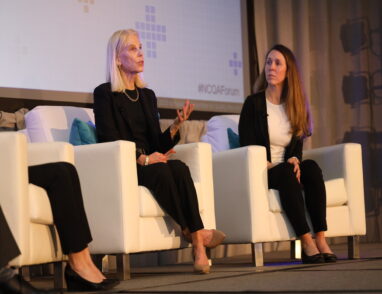Telehealth and Health Equity: The White Paper
May 10, 2022 · Matt Brock
We’ve released a new whitepaper covering two of health care’s intersecting priorities. The full text of the white paper, titled The Future of Telehealth Roundtable: The Potential Impact of Emerging Technologies on Health Equity, is available on the NCQA website. The report stems from an October NCQA roundtable discussion on the future of virtual health care delivery in a post-pandemic world. The roundtable featured a diverse panel of experts in telehealth, technology, regulation, and policy, including individuals from MedStar Health, Veterans Affairs Medical Center, and the National Partnership for Women and Families, among others.
“Even prior to the pandemic, a change in health care delivery was on the horizon with ever-evolving advancements in technology,” says NCQA President Margaret E. O’Kane. “As virtually based care expands, unique patient needs and preferences must be identified and prioritized so that telehealth can help us close the gaps in health care and not widen existing disparities.”
Telehealth’s Potential Pitfall
While there are clear benefits to telehealth such as cost-effectiveness and convenience, it also has the potential to exacerbate inequities among people in underserved communities. Using a hypothetical, patient case-based approach, panelists identified technical and structural issues that lead to inequities in telehealth, including lack of broadband access, disjointed technology interfaces, antiquated federal regulations, restrictive payment and coverage policies, and disparate state licensure laws.
The panel recommended a combination of patient-centric, policy focused, technology-based solutions to address these barriers. They include:
- Tailoring Telehealth Use and Access to Individual Preferences and Needs: overcoming barriers to technology caused by issues related to digital literacy, language proficiencies or socioeconomic status. Sample solutions include using language that respects cultural differences and designing digital tools for those with visual, cognitive, and other disabilities.
- Addressing Regulatory, Policy and Infrastructure Barriers to Fair Telehealth Access: updating regulations that govern broadband access and infrastructure and policies that determine clinician eligibility for licensure. This could include promoting community and corporate partnerships to improve broadband access and reversing policies that prohibit audio-only telehealth for services.
- Leveraging Telehealth and Digital Technologies to Promote Equitable Care Delivery: using digital tools to close gaps in care and drive health equity forward. For example, ensuring digital technologies are interoperable across clinical portals and telehealth platforms and gathering patient data outside of patient visits, through use of allied health professionals or artificial intelligence, to understand when patients need to be engaged.
“We really have to change the way we think about health in this country. We have to put the patient at the center – not the doctors, not the insurers, not the policymakers, or anybody’s particular self-interest,” said Regina Benjamin, MD, MBA, Former Surgeon General of the United States and Founder and CEO of Bayou La Batre Rural Health Clinic, who participated in the roundtable. “Putting the patient first in our policy thinking is really where we can change healthcare and make more healthy communities.”








